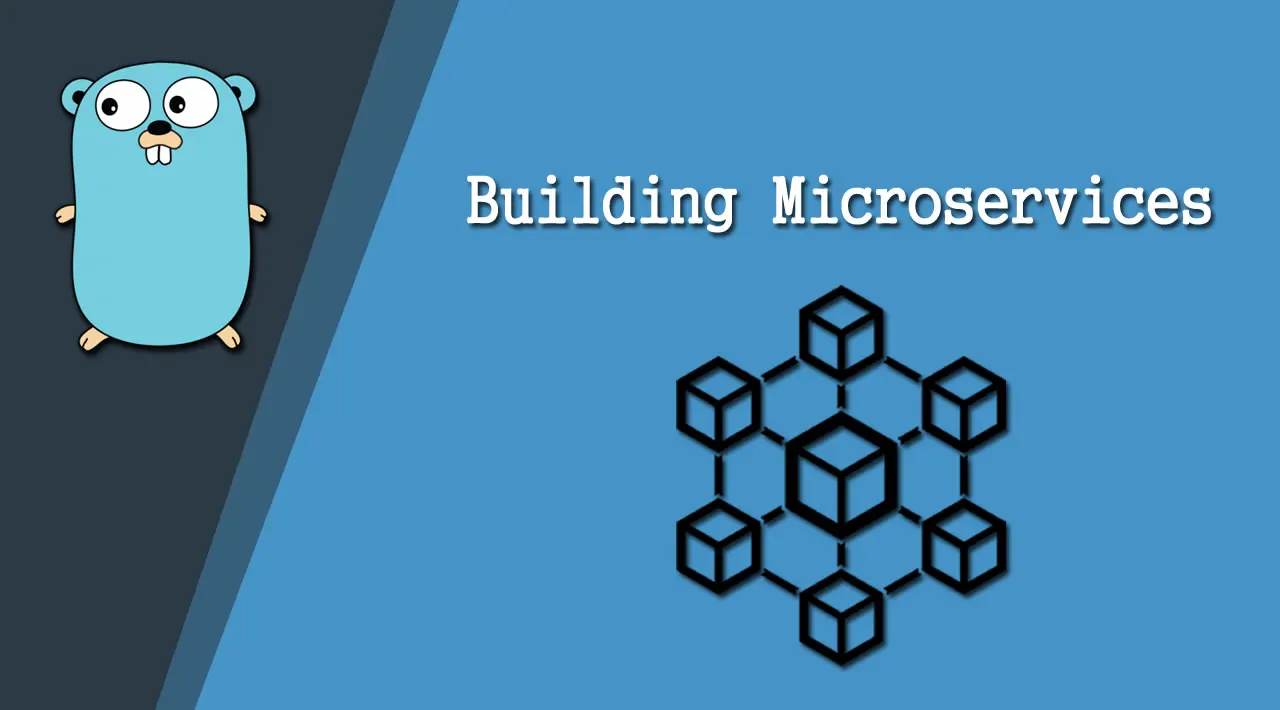

[译]用 Go 语言编写一个微服务博客 — 第三部分 — 嵌入数据库并提供 JSON 服务
source link: https://www.sulinehk.com/post/write-a-microservice-blog-in-golang-part3/
Go to the source link to view the article. You can view the picture content, updated content and better typesetting reading experience. If the link is broken, please click the button below to view the snapshot at that time.

[译]用 Go 语言编写一个微服务博客 — 第三部分 — 嵌入数据库并提供 JSON 服务
原文链接:Go Microservices, part 3 - embedded database and JSON
在第 3 部分中,我们将使我们的 Accountservice 做一些有用的事情。
- 声明一个 Account 结构体。
- 嵌入一个简单的键值存储,这样我们就可以在其中存储 Account 结构体。
- 将结构体序列化为 JSON,并通过我们的 /accounts/{accountId} HTTP 服务提供服务。

和本博客系列的所有后续部分一样,您可以通过克隆源代码(请参阅第 2 部分)并切换到 P3 分支来获得该部分的完整代码,如:
git checkout P3声明一个账户结构体
有关 Go 结构体的更详细介绍,请查看这个指南。
在我们的项目中,在 /accountservice 下创建一个名为 model 的文件夹。
mkdir model然后在 model 文件夹中创建一个名为 account.go 的文件,其内容如下:
package model
type Account struct {
Id string `json:"id"`
Name string `json:"name"`
}这段代码声明了我们的 Account 抽象,它基本上就是一个 id 和一个 name。变量名第一个字母的大小写表示作用域(大写表示包外可见,小写表示包外不可见)。我们还使用标准库的 json.Marshal 函数和标签来表示 Go 应如何序列化每个字段。
嵌入键值存储
为此,我们将使用 BoltDB 键值存储数据库。它简单,快速且易于使用。我们需要在声明使用依赖项之前使用 go get 来下载依赖项:
go get github.com/boltdb/bolt接下来,在 /goblog/accountservice 文件夹中,创建一个名为 dbclient 的文件夹和一个名为 boltclient.go 的文件。为了使以后的模拟测试更加容易,我们先声明一个接口,该接口定义了我们需要实现的函数:
package dbclient
import (
"github.com/callistaenterprise/goblog/accountservice/model"
)
type IBoltClient interface {
OpenBoltDb()
QueryAccount(accountId string) (model.Account, error)
Seed()
}在同一文件中,我们将提供此接口的实现。首先声明一个结构体,该结构体封装了一个指向 bolt.DB 实例的指针。
// Real implementation
type BoltClient struct {
boltDB *bolt.DB
}然后是 OpenBoltDb() 的实现。
func (bc *BoltClient) OpenBoltDb() {
var err error
bc.boltDB, err = bolt.Open("accounts.db", 0600, nil)
if err != nil {
log.Fatal(err)
}
}我们将函数绑定到结构体上的 Go 语法可能会有些奇怪。现在,我们的结构体隐式实现了三种方法之一。
我们将在某个地方需要这个 bolt client 的实例。让我们在 /goblog/accountservice/service/handlers.go 中将其放在要被使用的地方。创建该文件并添加结构体实例:
package service
import (
"github.com/callistaenterprise/goblog/accountservice/dbclient"
)
var DBClient dbclient.IBoltClient更新 *main.go*,以便它在启动时打开数据库:
func main() {
fmt.Printf("Starting %v\n", appName)
initializeBoltClient() // NEW
service.StartWebServer("6767")
}
// Creates instance and calls the OpenBoltDb and Seed funcs
func initializeBoltClient() {
service.DBClient = &dbclient.BoltClient{}
service.DBClient.OpenBoltDb()
service.DBClient.Seed()
}现在,我们的微服务应该可以在启动时创建一个数据库。但是,在运行之前,我们将添加一段代码,这些代码将在启动时为我们添加一些假帐户数据。
启动时添加一些假账户数据
再次打开 boltclient.go 并添加以下函数:
// Start seeding accounts
func (bc *BoltClient) Seed() {
initializeBucket()
seedAccounts()
}
// Creates an "AccountBucket" in our BoltDB. It will overwrite any existing bucket of the same name.
func (bc *BoltClient) initializeBucket() {
bc.boltDB.Update(func(tx *bolt.Tx) error {
_, err := tx.CreateBucket([]byte("AccountBucket"))
if err != nil {
return fmt.Errorf("create bucket failed: %s", err)
}
return nil
})
}
// Seed (n) make-believe account objects into the AcountBucket bucket.
func (bc *BoltClient) seedAccounts() {
total := 100
for i := 0; i < total; i++ {
// Generate a key 10000 or larger
key := strconv.Itoa(10000 + i)
// Create an instance of our Account struct
acc := model.Account{
Id: key,
Name: "Person_" + strconv.Itoa(i),
}
// Serialize the struct to JSON
jsonBytes, _ := json.Marshal(acc)
// Write the data to the AccountBucket
bc.boltDB.Update(func(tx *bolt.Tx) error {
b := tx.Bucket([]byte("AccountBucket"))
err := b.Put([]byte(key), jsonBytes)
return err
})
}
fmt.Printf("Seeded %v fake accounts...\n", total)
}有关 Bolt API 的更多信息以及 Update 方法如何接收我们的函数的详细信息,请参阅 BoltDB 文档。
目前为止,我们已经完成了跟 BoltDB 有关的部分。让我们再次编译并运行:
> go run *.go
Starting accountservice
Seeded 100 fake accounts...
2017/01/31 16:30:59 Starting HTTP service at 6767很好!可以使用 Ctrl+C 停止运行。
添加一个查询方法
现在,我们通过向 boltclient.go 添加 Query 方法来完成我们的数据库 API:
func (bc *BoltClient) QueryAccount(accountId string) (model.Account, error) {
// Allocate an empty Account instance we'll let json.Unmarhal populate for us in a bit.
account := model.Account{}
// Read an object from the bucket using boltDB.View
err := bc.boltDB.View(func(tx *bolt.Tx) error {
// Read the bucket from the DB
b := tx.Bucket([]byte("AccountBucket"))
// Read the value identified by our accountId supplied as []byte
accountBytes := b.Get([]byte(accountId))
if accountBytes == nil {
return fmt.Errorf("No account found for " + accountId)
}
// Unmarshal the returned bytes into the account struct we created at
// the top of the function
json.Unmarshal(accountBytes, &account)
// Return nil to indicate nothing went wrong, e.g no error
return nil
})
// If there were an error, return the error
if err != nil {
return model.Account{}, err
}
// Return the Account struct and nil as error.
return account, nil
}如果代码不够清晰,可以理解一些注释。该函数将使用提供的 accountId 参数查询 BoltDB,并将返回 Account 结构体或一个 error。
通过 HTTP 提供账户服务
让我们修复在 /service/routes.go 中声明的 /accounts/{accountId} 路由,以便它正确返回刚才我们建立的假数据 Account 结构体。打开 routes.go 并用我们稍后将创建的函数 GetAccount 替换原来的 *func(w http.ResponseWriter,r * http.Request){*:
Route{
"GetAccount", // Name
"GET", // HTTP method
"/accounts/{accountId}", // Route pattern
GetAccount,
},接下来使用符合 HTTP handler 函数签名的 GetAccount 函数来更新 */service/handlers.go*:
var DBClient dbclient.IBoltClient
func GetAccount(w http.ResponseWriter, r *http.Request) {
// Read the 'accountId' path parameter from the mux map
var accountId = mux.Vars(r)["accountId"]
// Read the account struct BoltDB
account, err := DBClient.QueryAccount(accountId)
// If err, return a 404
if err != nil {
w.WriteHeader(http.StatusNotFound)
return
}
// If found, marshal into JSON, write headers and content
data, _ := json.Marshal(account)
w.Header().Set("Content-Type", "application/json")
w.Header().Set("Content-Length", strconv.Itoa(len(data)))
w.WriteHeader(http.StatusOK)
w.Write(data)
}GetAccount 函数符合 handler 函数签名,所以当 Gorilla 检测到对 /accounts/{accountId} 的调用时,它会把请求路由到 GetAccount 函数中。让我们来运行它看看!
> go run *.go
Starting accountservice
Seeded 100 fake accounts...
2017/01/31 16:30:59 Starting HTTP service at 6767使用 curl 调用该 API。注意,我们前面创建了 100 个 ID 从 10000 开始的假帐户。
> curl http://localhost:6767/accounts/10000
{"id":"10000","name":"Person_0"}很好!现在,我们的微服务真正地通过 HTTP 从数据库中提供 JSON 数据。
运行时和性能表现
让我们检查与第 2 部分中相同的内存和 CPU 使用率指标:场景分别是负载测试前、负载测试中和负载测试后。
启动后的内存使用情况

2.1 mb,还是很不错!添加嵌入式 BoltDB 和一些其他代码来处理路由,使得我们的初始内存占用增加了 300kb。让我们以 1K req/s 的速度来运行 Gatling 测试。现在,我们返回的是从 BoltDB 获取的真实的 Account 对象,而且该对象已序列化为 JSON:
负载测试后的内存使用情况

31.2 mb 的内存占用。与第 2 部分中的简单服务相比,使用嵌入式数据库并达到 1K req/s 的额外开销确实很小。
性能和 CPU 占用率

1K req/s 约占单个核心的 10%。BoltDB 和 JSON 序列化的开销不是很大,很好!顺便说一下:最上面的 Java 进程是我们的 Gatling 测试,实际上它使用的 CPU 资源约为我们服务的 3 倍。

平均响应时间仍小于一毫秒。
也许我们应该在更重的负载下进行测试,比如说 4K req/s?(注意,可能需要在操作系统级别上增加可用文件句柄的数量):
内存使用率为 4K req/s

约 120 mb。几乎正好增加了 4 倍。几乎可以肯定,使用 n/o 并发请求导致的内存增加是由于 Go 运行时,或者是 Gorilla 随着负载提高而增加的用于为请求提供服务的 goroutine。
4K req/s 的性能

在 4K req/s 下,CPU 使用率保持在 30% 以下。此时,即便在配备 16 GB RAM/Core i7 的笔记本电脑上运行,瓶颈也可能会出现在 IO 或文件句柄,而不是 CPU。

现在,平均等待时间终于提升为 1 ms,其中 95% 的请求保持在 3 ms 以下。虽然我们确实看到延迟在 4K req/s 时受到冲击,但是我个人认为带有嵌入式 BoltDB 的小型服务 Accountservice 的性能确实很好。
与其他平台的比较
其他人可能会写一些有趣的博客文章,关于将该 accountservice 在 JVM、NodeJS 或 CLR 等上实现,并对其进行基准测试。
我在 2015 年底对此进行了一些简单的不够准确的基准测试(使用 Gatling 测试套件),比较了分别在 Go 1.5、Java 8 Spring Boot 和 NodeJS 中实现的 HTTP/JSON 服务 + MongoDB 读取。在该特殊情况下,基于 JVM 和 Go 的解决方案都可以很好地扩展,但 Go 与JVM 的延迟相比略有优势。NodeJS 的性能与上述方案相似,直到单个内核上的 CPU 利用率达到 100%,这时延迟就开始出现下降了。
请不要将上述基准测试当作某种依据,因为这只是我自己做的一个快速而不专业的测试。
因此,尽管我已经展示了使用 Go 1.7 编写的 accountservice 在 4K req/s 下可观的性能数据,但其他平台也有可能达到这个性能,不过我也怀疑它们的内存使用是否比 Go 少。也许您的体验和我不同。
在本博客系列的下一部分中,我们将看看如何使用 GoConvey 并模拟 BoltDB 客户端来对服务进行单元测试。
Recommend
About Joyk
Aggregate valuable and interesting links.
Joyk means Joy of geeK